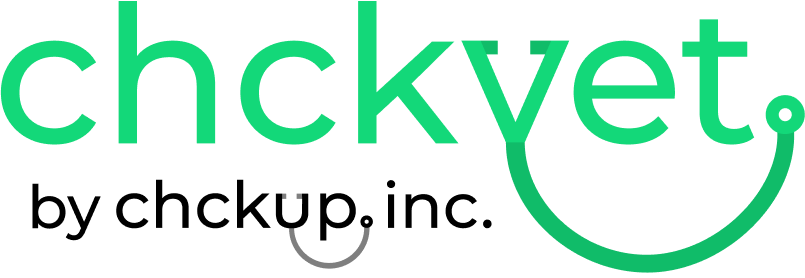Table of Contents
How Do the Meta Title and Description Help with SEO?
Why You Should Optimize Meta Title Tags for Veterinary SEO
Follow Title Tag Best Practices
Use Target Keywords
Write with a Unique Voice
Optimizing Meta Descriptions for Veterinary SEO
Use the Right Character Limit
Add a Strong CTA
Include Target Keywords
Use Actionable Language
Make it Unique but Relevant
Optimize Your Veterinary Practice with Chckup
How to Create the Best Meta Title and Description for Veterinary Practice SEO
Elliott Greenwood
May 19, 2023 · 3 min read

The meta title and description are an important part of your overall SEO. Learn best practices to optimize your website.
The meta title and description of your web page play an essential role in your site’s search engine optimization (SEO). By using SEO best practices, your veterinary clinic can climb the search rankings to appear at the top of the results when someone searches for local veterinary practices.
Below, we give a rundown of the best practices for creating optimized meta titles and descriptions, also known as meta tags.
How Do the Meta Title and Description Help with SEO?
Your meta title and description describe the content of your web page, providing a short summary for individuals using Google or other search engines to find veterinary practices.
Meta tags have two important functions:
Letting search engines know what your content is about
Influencing users to click your link instead of the competition’s
Optimizing your meta title and description for each page is the key to increasing your website’s click-through rate, leading to more new clients for your veterinary clinic.
Why You Should Optimize Meta Title Tags for Veterinary SEO
The title tag represents the title of your web page, allowing users to quickly identify what the blog post or service page is about. It should be unique and eye-catching, leading to more clicks from potential veterinary clients.
Follow Title Tag Best Practices
SEO experts have determined the best practices for creating title tags for Google and other search engines. When deciding the right title tag for your veterinary web page, you should follow these guidelines for the best results:
Keep titles under 60 characters
Use action words to answer what, how, why, and where
Avoid using duplicate title tags
Use Target Keywords
Target keywords are a vital part of SEO, so you should include them in your title tags. The keywords you use depend on the page content, but they should be words or phrases that users commonly search for to find the veterinary service you’re offering.
Examples of these include:
“Vet clinic near me”
“Shots for my dog”
“Veterinary appointment cost”
Write with a Unique Voice
When competing with other veterinary practices, it’s crucial to make your title tags stand out from the competition. Pet owners are more likely to click on a link with an interesting title that matches their search intent. Use descriptive words to highlight the unique selling points of your veterinary practice, such as “Affordable veterinary appointments in Chicago.”
Optimizing Meta Descriptions for Veterinary SEO
While meta descriptions don’t directly influence search engines to improve your ranking, they can indirectly help your veterinary practices reach the top of search results by improving your click-through rate.
Use the Right Character Limit
You should keep your description under 155 characters. If the description is longer than 155 characters, Google will cut off the text, making it less likely for users to click on your web page.
Add a Strong CTA
One of the most important aspects of a meta description is the call-to-action (CTA), which prompts the user to take a specific action that leads to the solution they’re searching for.
For example, a CTA can be:
Learn more
Call us now
Schedule an appointment today
Include Target Keywords
It’s crucial to include your target keyword and other related keywords in your meta description. It does two things to help optimize your web page’s performance.
It influences Google to use your meta description in the results and attracts more users by matching their search query.
Use Actionable Language
A description with an active voice can draw more pet owners in by addressing their problems and describing the solution your web page provides. A clear, actionable description is much more attractive to users than one that gives a dull summary of the content.
Make it Unique but Relevant
Your description should be unique and compelling, but it should always relate to the content on the page. Search engines will know if you use a description that isn’t relevant to the content on your page, hurting your ranking in the search results.
Optimize Your Veterinary Practice with Chckup
With Chckup, you can discover the most important details about the state of your veterinary practice using our innovative software that connects with your existing systems. With the information we give you access to, you can streamline your practice operations and save hundreds of hours monthly.
Schedule a demo today and see how Chckup can help shape the future of your practice.
Are you a veterinary professional?
If you're in the veterinary field and you're interested in giving your practice the extra hands it desperately needs, book an 8 minute demo with Chckvet. Our platform helps busy practices handle call overload, boost revenue per client, and increase client satisfaction by providing actionable insights and easy-to-use technology to help you stay on top of everything.
Book an 8 minute demo
Looking for a better solution?
Discover how Chckvet can help fill your schedule and give your team their time back.
